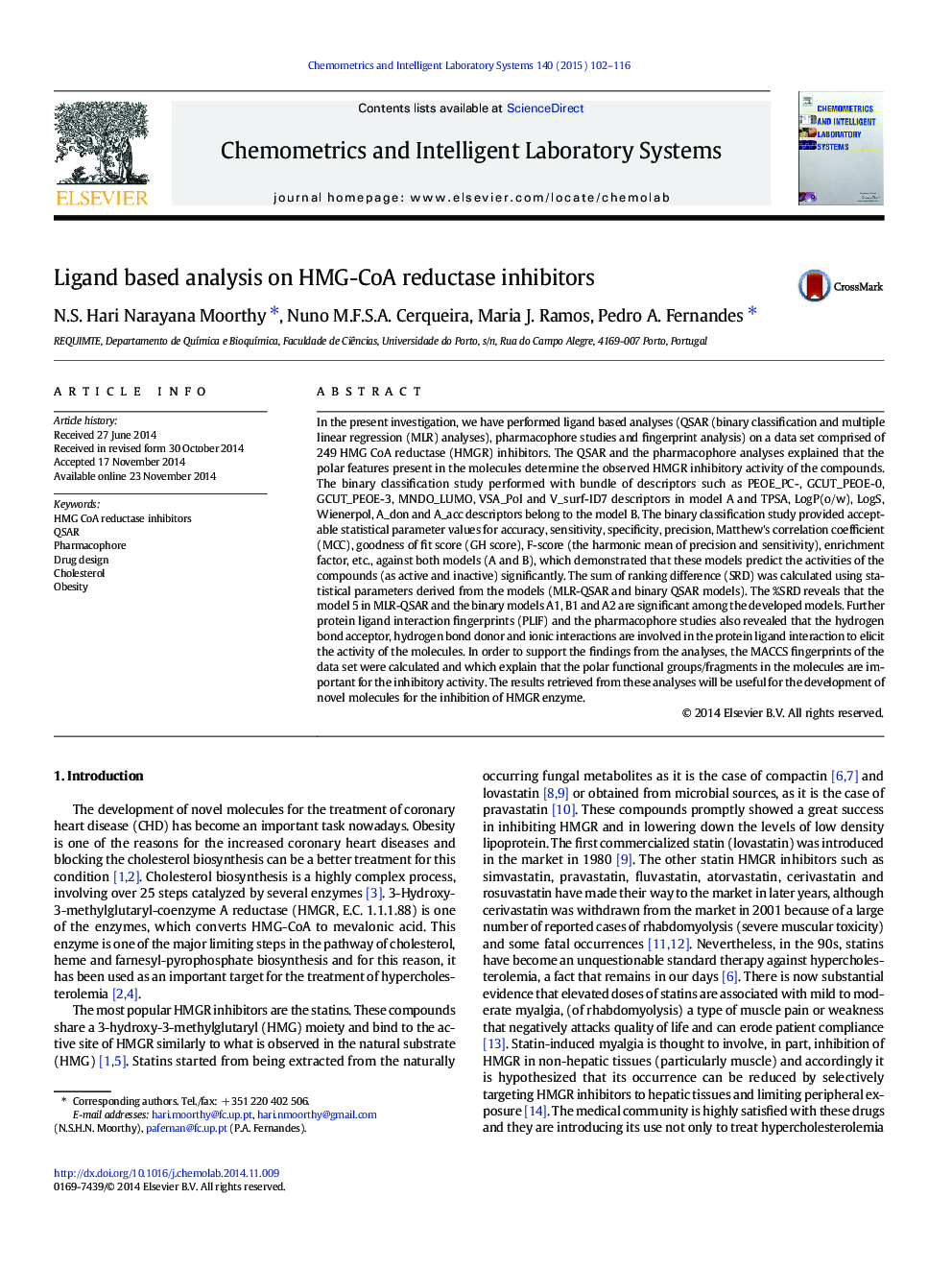| کد مقاله | کد نشریه | سال انتشار | مقاله انگلیسی | نسخه تمام متن |
|---|---|---|---|---|
| 1180627 | 1491538 | 2015 | 15 صفحه PDF | دانلود رایگان |

• QSAR, binary classification and pharmacophore analyses were reported.
• Binary classification models provided significant statistical parameters.
• PLIF analysis showed that the polar features are important for the interaction.
• The pharmacophore query showed that the polar contours are important.
• MACCS fingerprints support the results.
• All the results explained that the polar features cause the inhibitory activity.
In the present investigation, we have performed ligand based analyses (QSAR (binary classification and multiple linear regression (MLR) analyses), pharmacophore studies and fingerprint analysis) on a data set comprised of 249 HMG CoA reductase (HMGR) inhibitors. The QSAR and the pharmacophore analyses explained that the polar features present in the molecules determine the observed HMGR inhibitory activity of the compounds. The binary classification study performed with bundle of descriptors such as PEOE_PC-, GCUT_PEOE-0, GCUT_PEOE-3, MNDO_LUMO, VSA_Pol and V_surf-ID7 descriptors in model A and TPSA, LogP(o/w), LogS, Wienerpol, A_don and A_acc descriptors belong to the model B. The binary classification study provided acceptable statistical parameter values for accuracy, sensitivity, specificity, precision, Matthew's correlation coefficient (MCC), goodness of fit score (GH score), F-score (the harmonic mean of precision and sensitivity), enrichment factor, etc., against both models (A and B), which demonstrated that these models predict the activities of the compounds (as active and inactive) significantly. The sum of ranking difference (SRD) was calculated using statistical parameters derived from the models (MLR-QSAR and binary QSAR models). The %SRD reveals that the model 5 in MLR-QSAR and the binary models A1, B1 and A2 are significant among the developed models. Further protein ligand interaction fingerprints (PLIF) and the pharmacophore studies also revealed that the hydrogen bond acceptor, hydrogen bond donor and ionic interactions are involved in the protein ligand interaction to elicit the activity of the molecules. In order to support the findings from the analyses, the MACCS fingerprints of the data set were calculated and which explain that the polar functional groups/fragments in the molecules are important for the inhibitory activity. The results retrieved from these analyses will be useful for the development of novel molecules for the inhibition of HMGR enzyme.
Journal: Chemometrics and Intelligent Laboratory Systems - Volume 140, 15 January 2015, Pages 102–116